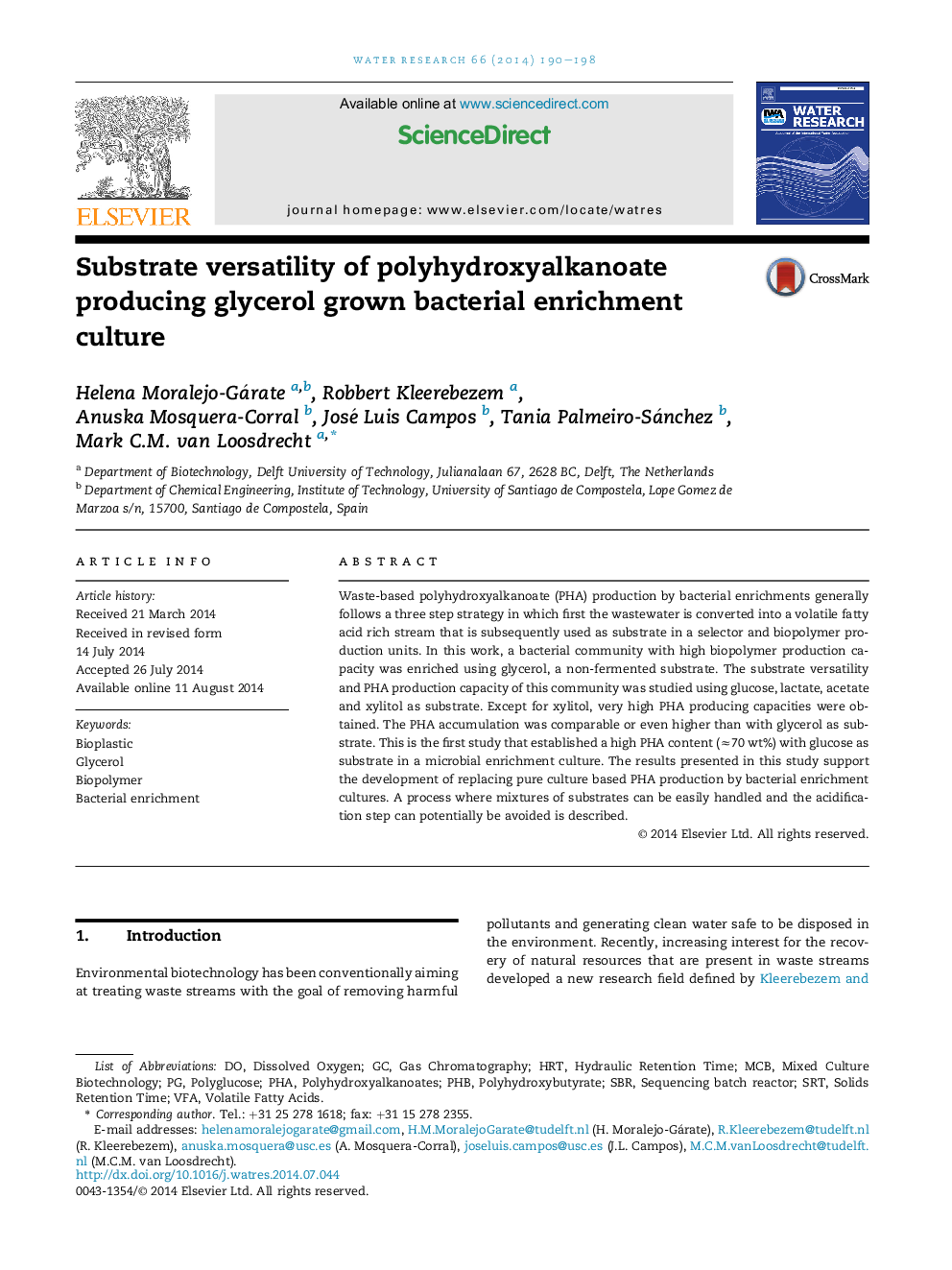| Article ID | Journal | Published Year | Pages | File Type |
|---|---|---|---|---|
| 4481393 | Water Research | 2014 | 9 Pages |
•Glycerol enriched biomass is able to produce PHA with a wide range of substrates.•Microbial enrichment cultures are capable of storing high PHA content from glucose.•A process to recover resources from different wastewaters is presented.
Waste-based polyhydroxyalkanoate (PHA) production by bacterial enrichments generally follows a three step strategy in which first the wastewater is converted into a volatile fatty acid rich stream that is subsequently used as substrate in a selector and biopolymer production units. In this work, a bacterial community with high biopolymer production capacity was enriched using glycerol, a non-fermented substrate. The substrate versatility and PHA production capacity of this community was studied using glucose, lactate, acetate and xylitol as substrate. Except for xylitol, very high PHA producing capacities were obtained. The PHA accumulation was comparable or even higher than with glycerol as substrate. This is the first study that established a high PHA content (≈70 wt%) with glucose as substrate in a microbial enrichment culture. The results presented in this study support the development of replacing pure culture based PHA production by bacterial enrichment cultures. A process where mixtures of substrates can be easily handled and the acidification step can potentially be avoided is described.
